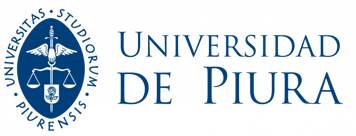Una extensión de la perspectiva de los efectos de la Agenda Setting. Explorando el tercer nivel de la Agenda setting
Palabras clave:
Estableciendo la agenda, agenda de atributos, relevanciaResumen
Los estudios sobre Agenda-Setting se extienden desde los efectos de los medios en la percepción de la opinión pública , sobre cuáles son los temas de mayor importancia en el día-a-día, hasta la elaboración más compleja de unos efectos jerárquicos de comunicación. Se distinguen tres niveles de Agenda-Setting. Los dos niveles iniciales germinaron durante la primera década de investigaciones. El tercer nivel es más reciente. Existe una evidencia académica que propone un Modelo de Red de Agenda-Setting. Este modelo teórico indica que los medios digitales pueden englobar una serie de objetos o atributos e influir de forma simultánea en la audiencia.
Métricas
Citas
ANDERSON, J. R. (1983). The architecture of cognition. Cambridge, MA: Harvard
University Press.
ANDERSON, J. R., & Bower, G. H. (1973). Human associative memory. Washington,
DC: Winston.
BUZAN, T., & BUZAN, B. (1996). The mind map book: How to use radiant thinking to
maximize your brain’s untapped potential: Plume.
CORTESE, J. (2007). Internet learning and the building of knowledge. Youngstown,
New York: Cambria Press.
CRAFT, S., & WANTA, W. (2004). "Women in the newsroom: Influences of female
editors and reporters on the news agenda". Journalism & Mass Communication
Quarterly, 81(1), 124-138.
EVELAND, W. P., Jr. (2001). "The cognitive mediation model of learning from the
news: Evidence from nonelection, off-year election, and presidential election
contexts". Communication Research, 28, 571-601.
GUO, L., & MCCOMBS, M. (2011a). Network agenda setting: A third level of media
effects. Paper presented at the ICA, Boston.
GUO, L., & MCCOMBS, M. (2011a). Network agenda setting: A third level of media
effects. Paper presented at the Annual International Communication Association
Conference, Boston, MA.
GUO, L., & MCCOMBS, M. (2011b). Toward the third-level agenda-setting theory: A
network agenda-setting model. Paper presented at the Association for Education in
Journalism and Mass Communication’s Annual Conference, St. Louis, MO.
HIGGINS, E. T. (1996). "Knowledge activation: Accessibility, applicability, and
salience". In E. T. Higgins & A. W. Kruglanski (Eds.), Social psychology: Handbook of
basic principles, 133 -168. New York: Guilford.
KAPLAN, S. (1973). "Cognitive maps in perception and thought". In R. M. Downs
& D. Stea (Eds.), Image and Environment: Cognitive mapping and spacial behavior,
-78. Chicago, IL: Aldine.
KIM, K., & MCCOMBS, M. (2007). "News story descriptions and the public’s
opinions of political candidates". Journalism & Mass Communication Quarterly, 84(2),
-314.
KIOUSIS, S. (2004). "Explicating media salience: A factor analysis of the New
York Times issue coverage during the 2000 US presidential election". Journal of
Communication, 54(1), 71-87.
LANG, A. (2000). "The limited capacity model of mediated message processing".
Journal of Communication, 50(1), 46-71.
LARSON, S. B., YEAGER, D. S., KROSNICK, J. A., & TOMPSON, T. (2010).
"Measuring Americans’s issue priorities: A new version of the most important
problem question reveals more concern about global warming and the
environment". Public Opinion Quarterly.
LEE, J. H. (2009). "News values, media coverage, and audience attention: An
analysis of direct and mediated causal relationships". Journalism & Mass
Communication Quarterly, 86(1), 175-190.
LIPPMANN, W. (1922). Public opinion. New York: Macmillan.
LOPEZ-ESCOBAR, E., LLAMAS, J. P., & MCCOMBS, M. (1998). "Agenda setting
and community consensus: First and second level effects". International Journal of
Public Opinion Research, 10(4), 335-348.
MAIER, S. (2010). "All the news fit to post? Comparing news content on the web
to newspapers, television, and radio". Journalism & Mass Communication Quarterly,
(3-4), 548-562.
MCCOMBS, M. (1997). "Building consensus: The news media’s agenda-setting
roles". Political Communication, 14(4), 433-443.
MCCOMBS, M. (2004). Setting the agenda: The mass media and public opinion.
Cambridge, MA: Polity Press.
MCCOMBS, M., LOPEZ-ESCOBAR, E., & LLAMAS, J. P. (2000). "Setting the
agenda of attributes in the 1996 Spanish general election". Journal of
Communication, 50(2), 77-92.
MCCOMBS, M., & SHAW, D. L. (1972). "Agenda-setting function of mass media".
Public Opinion Quarterly, 36(2), 176-187.
MCCUTCHIN, M. (2008). Creative problem - Solving/ Ideation techniques.
Power Point Presentation for the Class “Creative Strategy”: The University of
Texas at Austin.
PEW PROJECT FOR EXCELLENCE IN JOURNALISM. (2006). About PEJ.
Retrieved March 10, 2012, from http://www.journalism.org/about_pej/about_our_site
POLLING REPORT. (2010). Problems and Priorities. Retrieved January 5, 2012,
from http://www.pollingreport.com/prioriti3.htm
PRICE, V., & TEWKSBURY, D. (1997). News values and public opinion: A
theoretical account of media priming and framing. In G. A. Barett & F. J. Boster
(Eds.), Progress in communication sciences: Advances in persuasion (Vol. 13, 173–212).
Greenwich, CT: Ablex.
SANTANEN, E., BRIGGS, R., & de VREEDE, G.-J. (2000). The cognitive network
model of creativity: A new causal model of creativity and a new brainstorming technique.
Paper presented at the Proceedings of the 33rd Hawaii International Conference
on System Sciences.
SMITH, T. W. (1980). "America’s most important problem – a trend analysis,
-1976". Public Opinion Quarterly, 44(2), 164-180.
WANTA, W., & GHANEM, S. (2006). Effects of agenda-setting. In R. W. Preiss, B.
M. Gayle, N. Burrell, M. Allen & J. Bryant (Eds.), Mass media effects research:
Advances through meta-analysis, 37-51. Mahwah, NJ Lawrence Erlbaum.
WANTA, W., & HU, Y. W. (1993). "The agenda-setting effects of international
news coverage: An examination of differing news frames". International Journal of
Public Opinion Research, 5(3), 250-264.
WASSERMAN, S., & FAUST, K. (1994). Social network analysis: Methods and
applications. Cambridge: Cambridge University Press.
WEAVER, D. H., GRABER, D. A., MCCOMBS, M., & EYAL, C. H. (1981). Media
agenda-setting in a presidential election: Issues, images, and interest. New York, NY: Praeger
Descargas
Publicado
Cómo citar
Número
Sección
Licencia
Derechos de autor 2022 Revista de Comunicación

Esta obra está bajo una licencia internacional Creative Commons Atribución-NoComercial-SinDerivadas 4.0.






 Portal de Revistas de la Universidad de Piura.
Portal de Revistas de la Universidad de Piura.